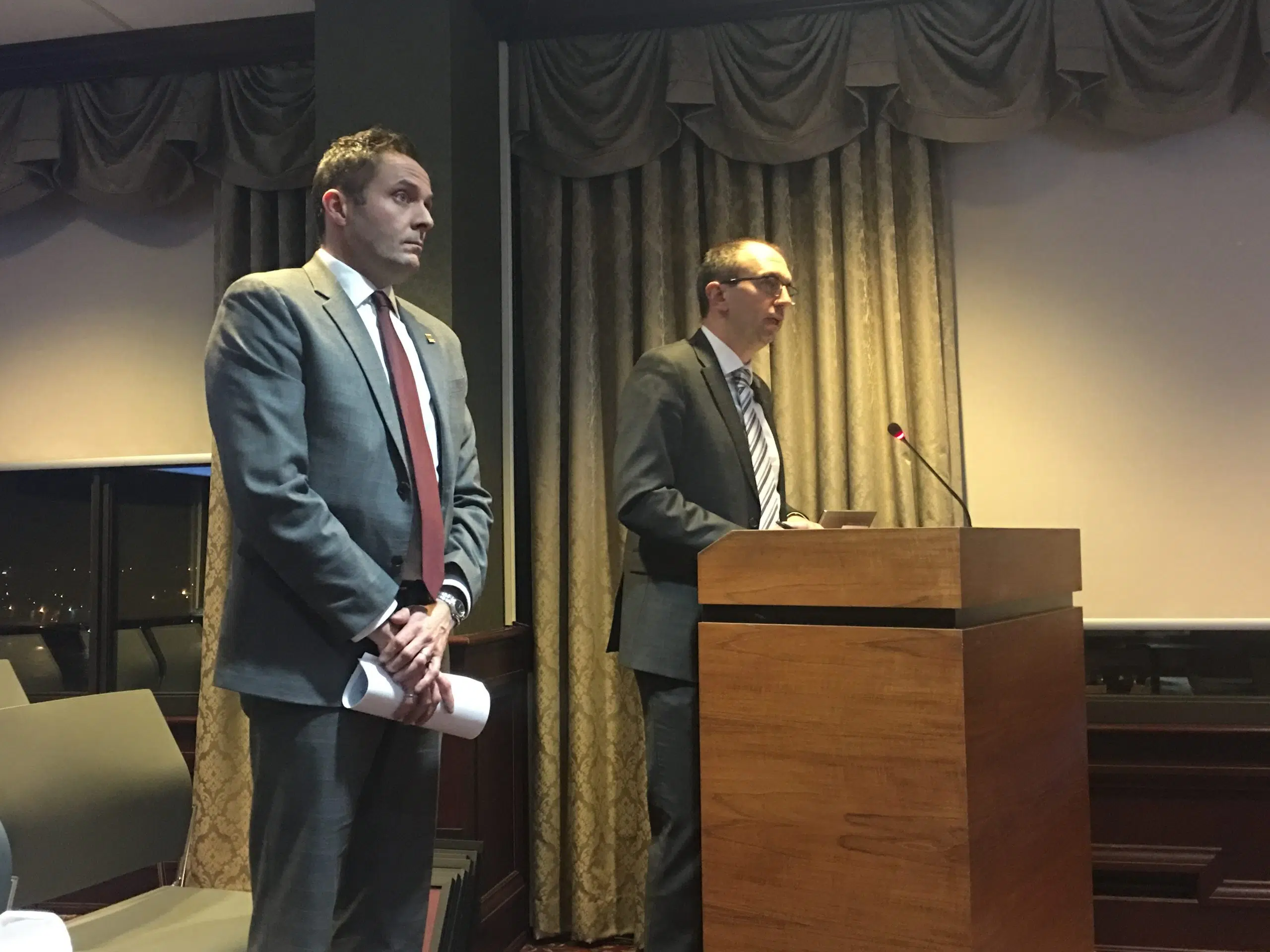
Mike Chaulk, left, of CBCL and Saint John Water commissioner Brent McGovern make a presentation to Common Council on February 12, 2019. (Brad Perry/Wave News)
A report into the rash of copper pipe leaks in west Saint John has been presented to city councillors.
Roughly 200 customers reported leaks after the city switched from Spruce Lake water to the South Bay Wellfield in late 2017.
The city hired Halifax-based CBCL Limited and Dalhousie University, at a cost of around $40,000, to try and figure out why it happened.
Council has voted to receive and file the report. If you're looking for some late-night reading, you can find the entire report online: https://t.co/q6foKjW3Ej
— Brad Perry (@BradMPerry) February 12, 2019
Mike Chaulk of CBCL says they believe the corrosive water from Spruce Lake eroded the pipes over time, but the material — or scaling — which formed inside stopped them from leaking.
“The material that was already there didn’t like the new water,” said Chaulk during Monday night’s council meeting.
“When it started to change or breakdown, what was left behind was a previously corroded pipe. That’s where you get a leak from.”
Leaks Not Expected
Chaulk said the pipe leaks were not expected after the switch as the groundwater is less corrosive than Spruce Lake.
He noted several other Atlantic Canadian communities have switched from surface water to groundwater without issue.
As for the specific mechanisms which caused the leaks in Saint John, Chaulk said he was unable to identify them due to the limited research and documents and available.
“It would be many years and many PhDs of research to actually definitively figure out the mechanisms that go into that transition event,” he said.
McGovern says leak reports appeared to peak in January of 2018. Only one leak was reported between April and June of 2018, and none have been reported since.
— Brad Perry (@BradMPerry) February 12, 2019
Chaulk said the city’s decision to install an orthophosphate treatment system last March helped mitigate the leaks.
He recommended the city continue adding the chemical until it can be proven a reduction would not lead to more corrosion issues or leaks.
Saint John Water commissioner Brent McGovern said they installed “pipe racks” in several locations within the water distribution system to monitor the effects of orthophosphate on pipes.




